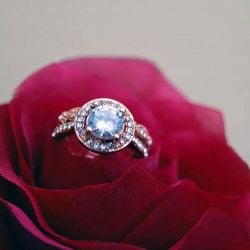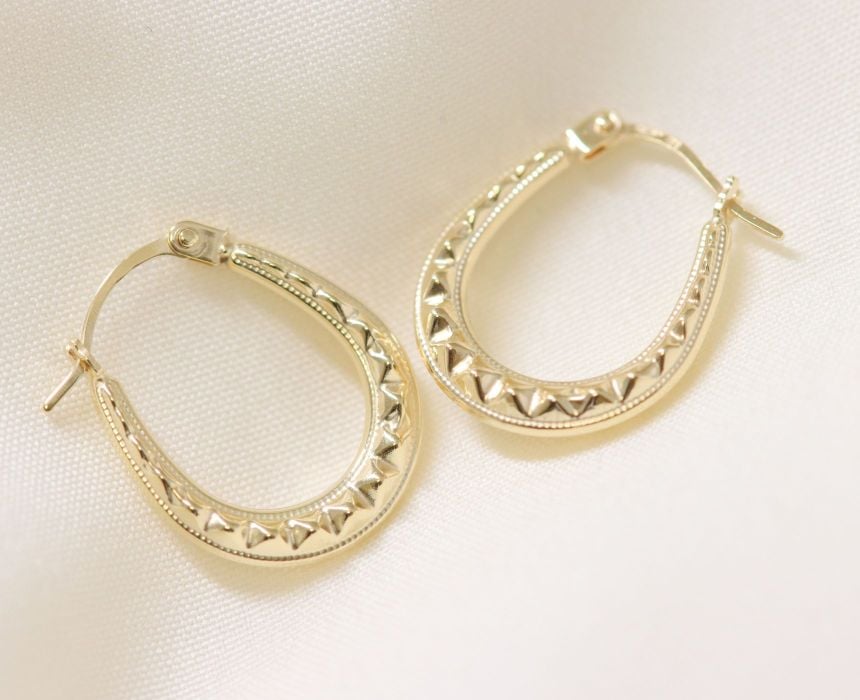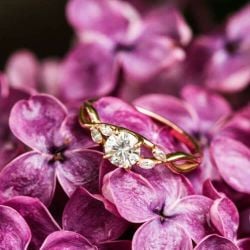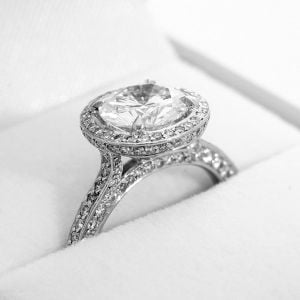- ‹Home
- ‹
- /
- Jewellery & Watch Guides
- /
- How to tell if a Rolex is Real

How to Tell if a Rolex is Real
Have you ever dreamed of owning a Rolex? When you start looking for that dream timepiece it can be confusing with so many counterfeits. At Ramsdens Jewellery, we understand the importance of authenticity, and we want to empower you to make informed decisions. In this guide, we'll be able to help you distinguish a genuine Rolex from a counterfeit. As always, if you're unsure, you should seek out an expert. We are always available to help and have over 160 locations across the UK.Authenticated Rolex Watches Find Your Closest Branch
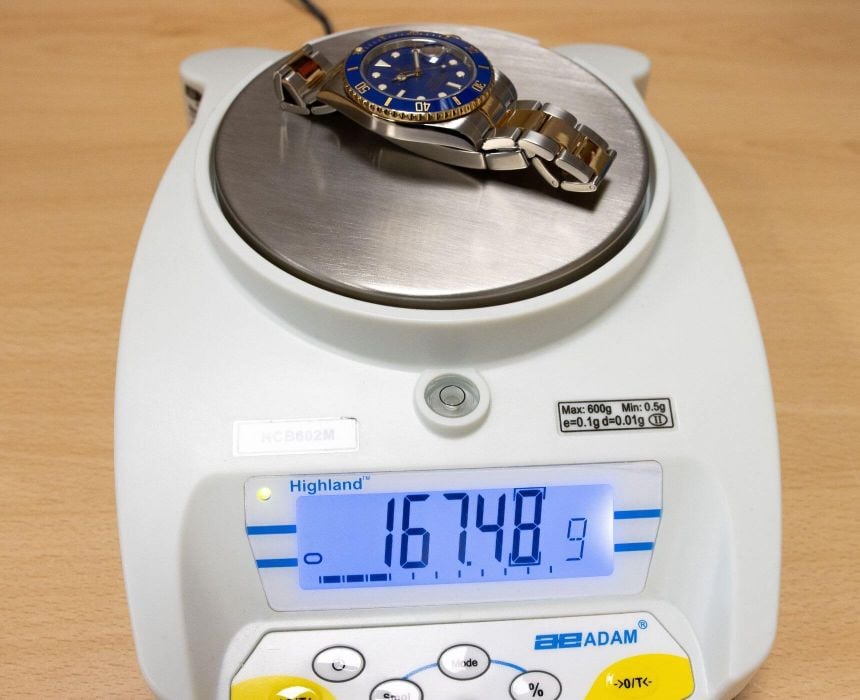
Watch Weight
A genuine Rolex isn't just about aesthetics; it's an experience. Pick one up, and you'll be met with a satisfying sense of weight. Rolex watches are crafted from premium materials like 904L stainless steel, 18k gold, or even platinum. This dedication to quality translates to a heft that most replicas simply can't replicate. While some forgeries might feel heavy at first, the materials used are often cheaper substitutes that lack the solidity of a genuine Rolex. Remember, a Rolex is an investment, and its weight should reflect that.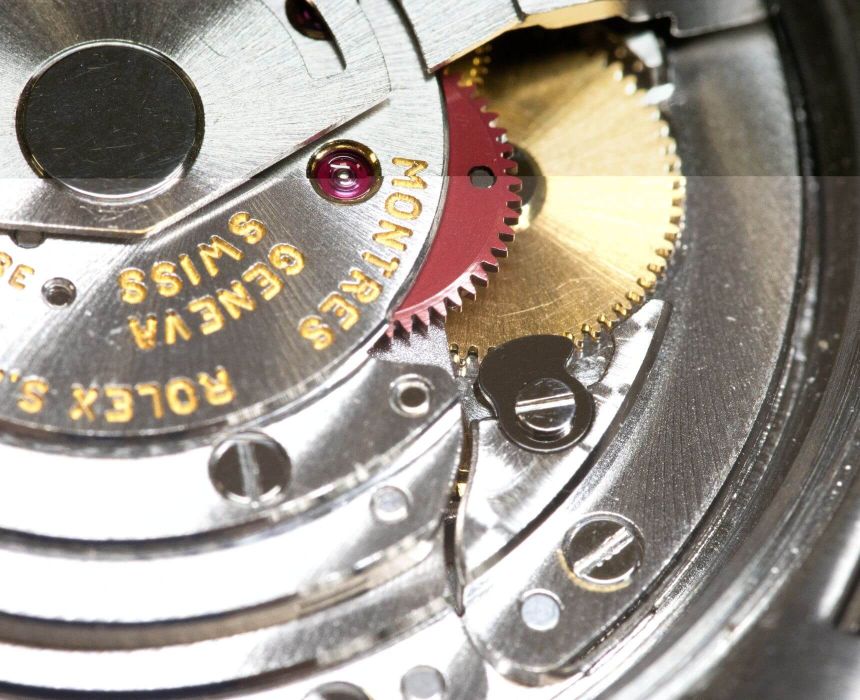
Movement
A Rolex isn't just a pretty face; it's a marvel of mechanical engineering. One key difference between a genuine Rolex and a fake is its movement. Authentic Rolex watches boast meticulously crafted movements renowned for their accuracy and smooth operation.
Here's where a genuine Rolex truly shines:
Smooth Sweeping Second Hand: Unlike a quartz watch with a ticking second hand, a genuine Rolex automatic features a sweeping second hand that glides effortlessly around the dial.
Exhibition Case Back (on specific models): Certain Rolex models offer an exhibition case back, allowing you to admire the intricate workings of the movement. Look for the Geneva Seal, a mark of exceptional watchmaking, if present.
Counterfeiters often struggle to replicate these intricacies. Their movements might tick instead of sweep, feel jittery, or lack the overall smoothness of a genuine Rolex. While you might not be a watchmaker, a keen eye for these details can be a powerful tool in your authentication journey.
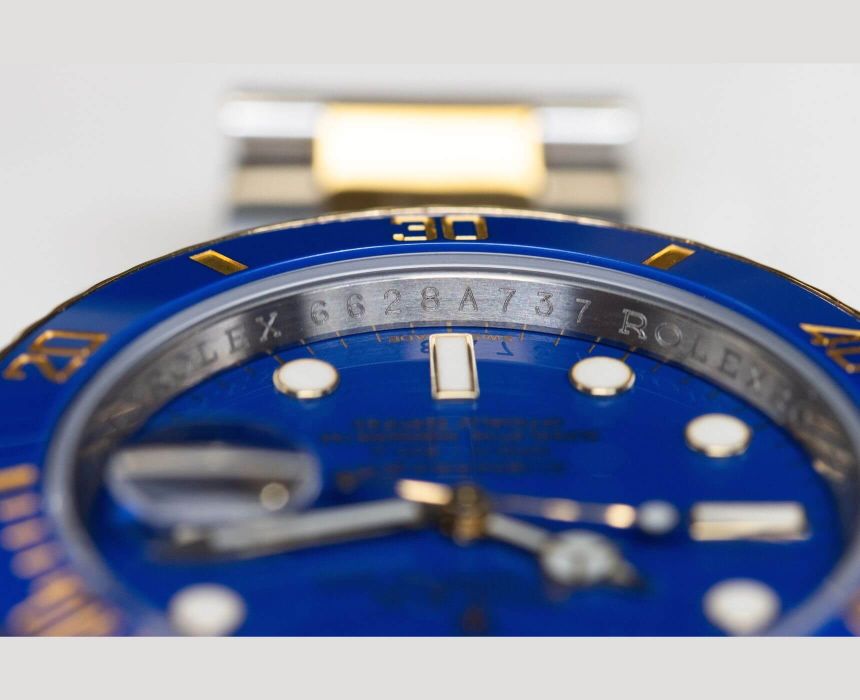
Serial Number
Every Rolex tells a story, and a crucial part of that narrative is its unique serial number. This alphanumeric code acts as a fingerprint, allowing for identification and verification of authenticity. Here's what you need to know about Rolex serial numbers:
Location, Location, Location: The placement of the serial number depends on the watch's age. Modern Rolex (post-2002) typically have the serial number engraved on the watch's inner bezel, visible between the lugs at the 6 o'clock position. For older models, the serial number might reside on the case back itself.
A Mark of Distinction: Genuine Rolex serial numbers are etched deeply and precisely into the metal. The lettering should be crisp, clean, and consistent in size and spacing. Fakes often have shallow, uneven engravings that appear blurry or poorly defined.
Double-Check the Details: Once you've located the serial number, it's crucial to verify its legitimacy. Rolex doesn't publicly disclose information about their serial number formats, but reputable online resources can offer guidance. You can also consider seeking professional authentication from a trusted watchmaker or jeweller.

Caseback
Unlike many other watch brands, Rolex takes a minimalist approach to its case backs. Here's what to expect from a genuine Rolex:
Solid Steel Sanctuary: Most Rolex models boast a solid metal case back, typically crafted from the same high-quality materials as the watch itself. This ensures optimal water resistance and a sense of solidity you won't find in a flimsy replica. Transparent or glass backs are a dead giveaway of a fake Rolex.
Engraving Exceptions: While the vast majority of Rolex case backs are unadorned, there are a few exceptions. The Sea-Dweller, for instance, features specific engravings related to its diving capabilities. However, these engravings are always crisp, clear, and precisely executed.
Beware the Bling: Counterfeiters often try to add perceived value with excessive engravings on the case back. These might include brand logos, model names, personalised messages, or even tacky designs. A genuine Rolex prioritises clean lines and understated elegance.
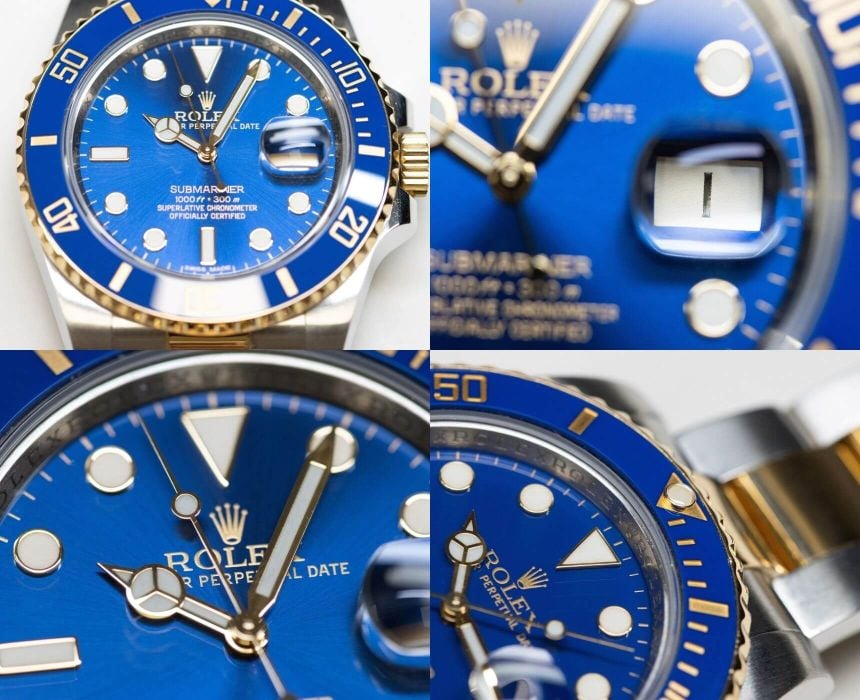
Dial
A genuine Rolex experience transcends the visual. Sure, weight and engravings offer valuable clues, but the true magic of Rolex authenticity lies in the interplay of the watch's movement, sound, and dial. These elements work together to tell a captivating story, a symphony of precision that sets Rolex apart.
Forget the rhythmic tick-tock of a quartz watch. A genuine Rolex boasts a sweeping second hand that glides effortlessly around the dial, a silent testament to the high-precision movements within. Counterfeits often struggle to replicate this fluidity, resulting in a jerky, stuttering second hand that might even tick with each second. Hold the watch close to your ear – a genuine Rolex should be virtually silent, while a fake might emit a faint ticking.
The dial of a genuine Rolex is a masterpiece of detail, a stage where precision takes centre stage. Rolex uses high-quality materials and meticulous printing techniques, resulting in flawless finishes. Look for crisp lettering, perfectly aligned markers, and a flawless application of luminous paint on the hands and indices. Fakes often fall short here, exhibiting misaligned elements, blurry fonts, or uneven paint application. The magnifying Cyclops lens (present on models with a date window) should be a crystal-clear dome that perfectly enlarges the date. A distorted or cloudy Cyclops is a red flag.
When you combine the silent sweep of the second hand with the meticulous detailing of the dial, you get a sense of harmonious precision. A genuine Rolex feels like a well-oiled machine, a testament to the brand's dedication to quality. Fakes often feel cheap and lack this sense of cohesion. The movement might feel jittery, the hands might wobble slightly, and the overall experience falls short of the luxurious weight and smooth operation of a genuine Rolex.
By paying close attention to this interplay – the silent sweep, the meticulous dial, and the overall feeling of precision – you can develop a keen eye for identifying a genuine Rolex. Remember, a Rolex is an investment, and every detail should reflect that quality and craftsmanship.
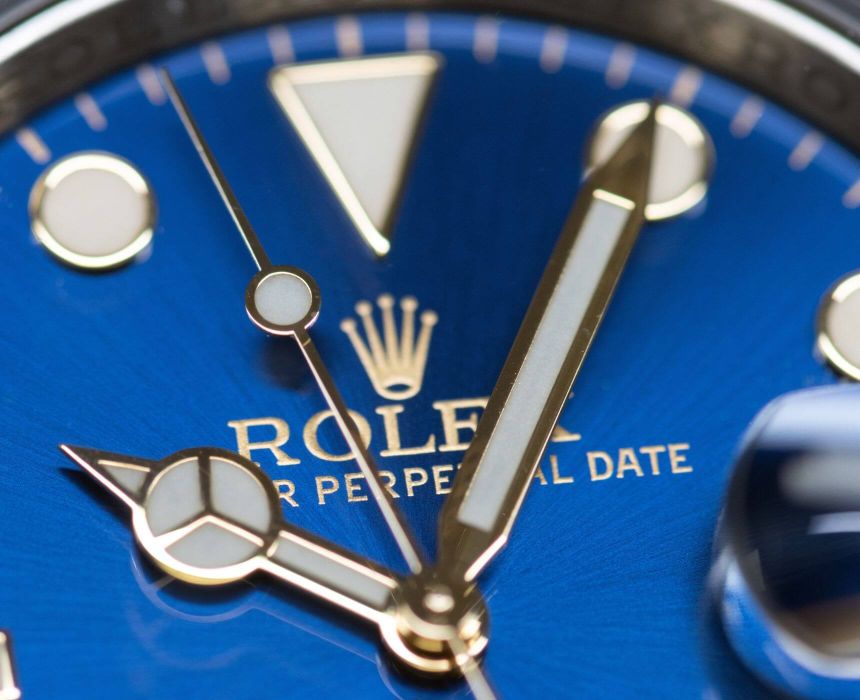
Logo
The iconic Rolex logo, a five-pointed coronet nestled above a shield, is more than just an emblem - it's a mark of distinction. But with its ubiquity, it can also be a target for forgery. Here's how to use the Rolex logo as a tool for authentication:
A Matter of Majesty: The genuine Rolex logo is a masterpiece of miniature craftsmanship. The crown itself should be three-dimensional, with sharp, well-defined points. The shield beneath it should be smooth and polished, with clean lines. Fakes often fall short here, with a blurry, poorly defined logo. The crown might appear flat or misshapen, and the shield might be uneven or scratched.
Location: The placement of the logo is also crucial. It should sit proudly at the 12 o'clock position on the dial, perfectly centred and aligned with the hour markers. Counterfeits might have a slightly off-centre logo, or it might appear tilted at a subtle angle.
The Mark of Microscopic Precision: Since 2002, Rolex has added a subtle yet powerful authentication feature on many of their models. A tiny Rolex crown logo is etched onto the inner surface of the sapphire crystal, near the 6 o'clock position. This microscopic detail is nearly invisible to the naked eye and requires a magnifying glass to see clearly. It's a testament to Rolex's commitment to detail and a significant hurdle for counterfeiters to overcome. While not all Rolex models have this feature, its presence is a strong indicator of authenticity.
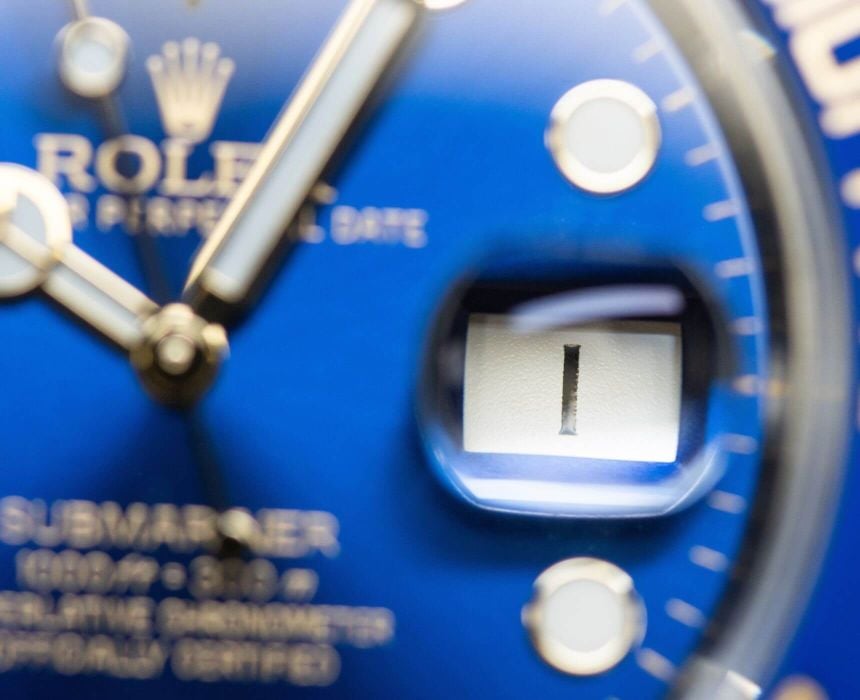
Cyclops
The Rolex Cyclops, that little magnifying bubble perched above the date window, isn't just a decorative flourish. It's a functional marvel and a key player in identifying a genuine Rolex. A true Rolex Cyclops is crafted from high-quality sapphire crystal, ensuring exceptional clarity and a distortion-free magnification of the date window, typically by 2.5 times. Peering through a genuine Cyclops, the date numerals should appear crisp, clear, and well-defined, offering a seamless and magnified view of the day.
However, counterfeit Rolexes often stumble in replicating the quality of the Cyclops lens. Fakes might use plastic instead of sapphire crystal, resulting in a blurry or distorted view of the date. The magnification might be weak or uneven, making the date numerals difficult to decipher. Additionally, the Cyclops itself might be a giveaway. On a genuine Rolex, it appears as a natural extension of the main crystal, seamlessly integrated with a smooth transition between the two surfaces. Counterfeits often have a poorly attached Cyclops that looks like an afterthought, with a visible gap or uneven edge where it meets the main crystal.
By scrutinising the Cyclops for clarity, material, and seamless integration, you gain valuable insight into the watch's authenticity. A genuine Rolex Cyclops should enhance your view of the date, not obstruct it, offering a magnified testament to the watch's precision.
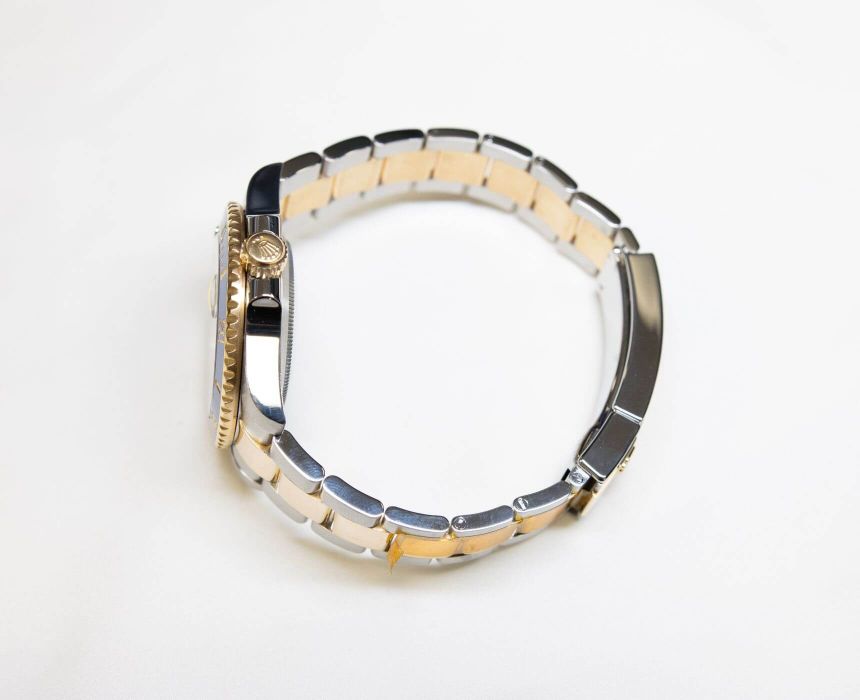
Water Resistance
While not a sole indicator, a watch's water resistance rating can offer valuable clues when it comes to Rolex authenticity. Here's how:
Know Your Rolex: Genuine Rolex models boast varying water resistance ratings, depending on the specific model. Oyster Perpetual models typically hold a 100-metre rating, while professional dive watches like the Sea-Dweller or Deepsea reach much deeper. Familiarise yourself with the expected water resistance rating for the specific Rolex model you're considering.
Engraved Evidence: Most modern Rolex models (post-2000) display their water resistance rating engraved on the watch's case back or inner bezel. This engraving should be crisp, clear, and consistent with the known rating for that particular model. A missing or poorly engraved rating is a red flag.
Beyond the Numbers: Water resistance is more than just a number. A genuine Rolex should feel solid and well-constructed, even after years of use. The crown should screw down securely, and there shouldn't be any visible gaps between the case and the crown. These qualities all contribute to the overall water resistance of the watch and can hint at its authenticity.
Remember, water resistance markings are not a guarantee – especially on vintage models. Always exercise caution and avoid submerging a Rolex you suspect might be a fake. For true peace of mind, consider having a professional jeweller or watchmaker test the water resistance of any pre-owned Rolex.
Authenticity at Ramsdens
By familiarising yourself with the hallmarks of a genuine Rolex – from weight and engravings to the silent sweep of the second hand and the magnifying marvel of the Cyclops – you've equipped yourself with valuable tools for navigating the world of Rolex watches. However, even the most discerning eye can be fooled. Counterfeiters are becoming increasingly sophisticated, and absolute certainty can be elusive.
At Ramsdens Jewellery, we understand the importance of trust and transparency. That's why we recommend seeking professional guidance when making a significant investment like a Rolex. Our team of passionate watch specialists possesses the expertise to meticulously examine a Rolex and verify its authenticity. They can also guide you through our collection of pre-owned Rolex models, ensuring you find the perfect timepiece to suit your style and budget.
So, while this guide has empowered you to identify many of the telltale signs of a genuine Rolex, remember – knowledge is always your greatest asset. Don't hesitate to leverage the expertise of trusted jewellers like us to ensure your Rolex is the real deal. With confidence and a keen eye, you can embark on your Rolex journey and find a timepiece that will be a cherished companion for years to come.
AUTHENTICATED ROLEX





